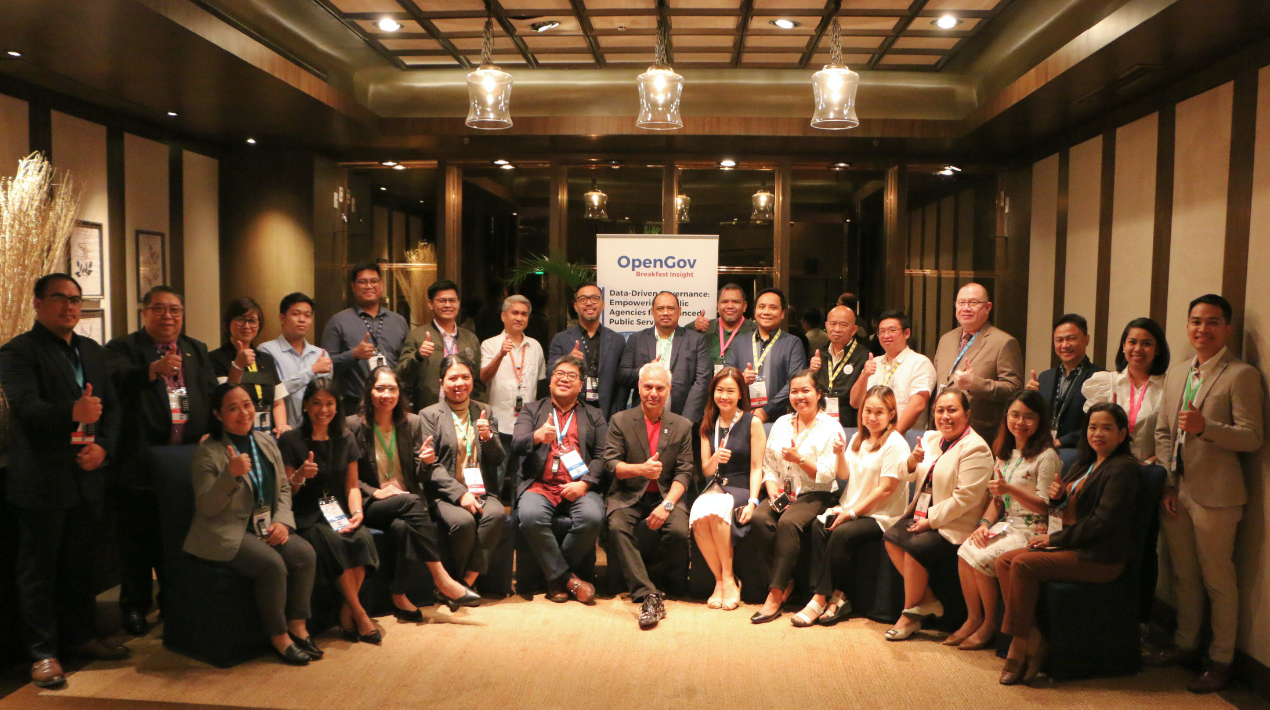
Sistem pemerintahan berbasis data sejatinya menekankan pada pemanfaatan data dan analisis terkait pembuatan keputusan dan peningkatan pelayanan publik. Dalam era perkembangan digital yang cepat, keberadaan sumber data yang cukup masif ini dapat menjadi peluang bagi lembaga pemerintahan dalam pemanfaatan informasi dan wawasan demi meningkatakan produktivitas masyarakat.
Melalui sistem tersebut, lembaga pemerintahan dapat memperoleh pemahaman mendalam terhadap permasalahan sosial dan tren. Hal ini dapat menjadi modal untuk mengembangkan kebijakan berdasarkan bukti nyata, menekankan pada aspirasi dan kebutuhan publik melalui pemanfaatan data secara maksimal.
Salah satu keunggulan pemerintahan berbasis data lainnya adalah terkait pelayanan penyediaan informasi yang valid. Sistem pemerintahan konvensional seperti sekarang ini masih bergantung pada intuisi akibat keterbatasan data, sehingga hanya akan menghasilkan informasi yang suboptimal.
Pemerintahan berbasis data juga memungkinkan lembaga pemerintahan untuk dapat memperkuat pelayanan publiknya. Melalui analisis preferensi masyarakat, pemanfaatan pola, dan tingkat kepuasan pelayanan, lembaga pemerintahan dapat menetapkan kebijakan berdasarkan segmentasi masyarakat yang terarah.
Walaupun begitu, dalam pengaplikasian sistem pemerintahan berbasis data, seringkali juga dihadang oleh tantangan ke depan. Penyediaan privasi data dan keamanan menjadi salah satu hambatan. Perlindungan privasi data masyarakat dari pihak yang tidak berkepentingan atau penyelewengan data membutuhkan perlindungan yang kuat dari lembaga pemerintahan.
Kemudahan dalam mengakses data yang berkualitas juga menjadi tantangan selanjutnya. Seringkali, lembaga pemerintahan harus menghadapi permasalahan seperti sumber data yang terfragmentasi, format data yang berbeda, dan ruang data yang terpisah.
Oleh karena itu, untuk memahami potensi sistem pemerintahan berbasis data secara maksimal, lembaga pemerintahan harus mengembangkan kemampuan analitik data dan meningkatkan kebiasaan masyarakat yang berbasis data. Hal ini dapat dilakukan dengan menyelenggarakan edukasi terkait literasi analisis data, menjalin kerja sama dengan akademisi dan pihak swasta, serta mendorong kebiasaan pengambilan keputusan berbasis data di semua sektor dan organisasi.
OpenGov Breakfast Insight yang diselenggarakan pada tanggal 24 Mei 2023 di hotel Shangri-La The Fort Manila bertujuan untuk mendiskusikan integrasi data terbarukan dan kelebihan dari analitik bagi sektor publik Filipina.
Pengantar Awal

Sesi Awal, Mohit Sagar, CEO & Pimpinan Redaksi, OpenGov Asia mengakui bahwa data menjadi sebuah komoditi utama di era digital ini. Keberadaan data melebihi sumber daya lama seperti minyak dan emas. Sebagai bukti sebuah pertumbuhan teknologi yang cepat, dunia mampu menghasilkan kuantitas data yang besar setiap detiknya.
Ia menambahkan bahwa informasi data dapat menjadi sebuah gambaran pemahaman terkait kebiasaan konsumen, tren, dan langkah pembentukan prosedur. Perusahaan dan institusi harus memperhatikan strategis dalam penggunaan data untuk dapat menghasilkan keunggulan yang kompetitif, menunjang pelayanan konsumen, dan memperkuat metode yang efisien.
Mohit menjelaskan, “dikarenakan pendekatan berbasis data mengalami peningkatan yang cukup drastis di berbagai sektor industri, kelebihan untuk mengakumulasi dan memanfaatkan data menjadi kunci utama dalam era modern ini. Data menjadi aset primadona dalam pertumbuhan ekonomi saat ini.”
Lebih jauh, ia menekankan bahwa dengan perkembangan teknologi yang terus berinovasi, data akan meningkat secara terus menerus. Berbagai institusi akan menghasilkan data dengan kuantitas yang belum pernah terjadi sebelumnya secara berkepanjangan. Hal ini disebabkan oleh penyebaran smartphone (telepon genggam pintar), Internet of Things (IoT), dan platform digital yang masif.
Dengan kelebihan tersebut, berbagai institusi dapat meminimalisir risiko kelebihan data yang berulang, menghilangkan silo data, serta meningkatkan kualitas dan konsistensi data dengan pengintegrasian. Bisnis pun dapat menerima pemahaman pasar, tren, dan keterkaitan capaian, sehingga menghasilkan keputusan-keputusan yang relevan ke depannya.
Integrasi data terus mendorong aspek kolaborasi dan efisiensi yang menghasilkan pertukaran data lebih cepat dari banyak pihak, sistem, dan departemen. Lebih jauh, hal ini dapat membangun basis sebagai standar analisis baru, machine learning (ML), dan artificial intelligence (AI), di mana ketepatan dan integrasi data merupakan hal yang penting sebagai modal prediksi yang akurat.
Mohit menekankan bahwa integrasi data memudahkan bisnis dalam memaksimalkan hasil analisis data, mendorong inovasi, dan membangun kebermanfaatan yang kompetitif saat ini. Ketika kebijakan saling komplemen satu dengan lainnya, kolaborasi antar pemerintahan juga akan menjadi sangat mudah untuk dikembangkan. Hasil dari kerja sama tersebut akan berbuah kepada peningkatan efisiensi kebijakan.
Lebih jauh, metode skala layanan dan ruang penyimpanan dalam digitalasasi telah mengalami transformasi sepenuhnya berkat teknologi virtualisasi. Mohit menekankan bahwa virtualisasi membuat kerjasama lebih mudah untuk mengalokasikan dan menggunakan kapasitas sumber penyimpanan secara efisien karena dapat memisahkan perangkat fisik yang biasa digunakan pada umumnya.
Pengaplikasian virtualisasi juga menawarkan fleksibilitas dan kemampuan beradaptasi. Melalui pengaplikasian virtualiasasi data, sebuah bisnis dapat mengembangkan infrastrukturnya secara dinamis sejauh yang dibutuhkan, serta dapat memperbesar layanan dan ruang penyimpanan untuk memenuhi tuntutan kebutuhan data yang berkembang. Hal ini tentu menjadikan bisnis mampu merespon perubahan secara cepat.
“Institusi maupun lembaga dapat memenuhi kebutuhan data dengan mengelola data secara baik, memperkuat skalabilitas, dan mengoptimalkan pemanfaatan sumber virtual,” jelas Mohit.
Setiap agensi nantinya akan bekerja lebih produktif setelah mengakses keseluruhan data. Mekanisme protokol juga akan diimplementasikan dalam kebijakan untuk memastikan bahwa izin dan akses diberikan kepada entitas yang membutuhkannya secara tepat.
Jika digunakan secara kompeten, data dapat membantu pemerintah dalam mengerjakan tugas secara efektif. Pelayanan dan kepuasan publik akan berimbas dikarenakan efisiensi dan keberhasilan kinerja yang efektif. “Pemerintah mampu mendapatkan pemahaman dari pola dan tren yang dikelola dengan maksimal dari analisis sebuah data,” tutupnya.
Salam Pembuka

Menurut Armstrong Mejilla, Senior Director, APJ Presales di Qlik, frasa “Data Everywhere, Data Everything” secara ringkas menggambarkan perluasan data yang masif saat ini. Hal ini menekankan pentingnya menghadapi tantangan dan memanfaatkan peluang yang muncul dari keberlimpahan data. Selain itu, ia juga menekankan pentingnya pengelolaan dan pemanfaatan dalam pengoptimalan potensi data secara efektif.
Kehadiran yang merata dan penggunaan data yang luas dalam dunia digital saat ini menekankan peran integral dalam kehidupan manusia. Hal ini menyebar ke setiap aspek aktivitas pribadi maupun profesional.
Data telah menjadi komponen yang tidak terpisahkan, membentuk dan memengaruhi berbagai aspek kehidupan sehari-hari, mulai dari pengambilan keputusan pribadi hingga ranah profesional. Kehadirannya yang merata menunjukkan dampak signifikan dan ketergantungan masyarakat yang dapat dengan mudah saling terhubung saat ini.
“Data terus tumbuh dengan kecepatan yang mengagumkan, menciptakan peluang menarik bagi sektor publik untuk meningkatkan layanan kepada masyarakat, meningkatkan kinerja keuangan, dan memenuhi misi mereka secara lebih,” tegas Armstrong. “Akan tetapi, ketika datang investasi dalam kecerdasan bisnis dan analitik data, faktor yang menjadi masalah seringkali terletak pada budaya dan kebiasaan.”
Banyak bisnis telah mencoba melaksanakan proyek transformasi digital yang bertujuan untuk menumbuhkan budaya inovasi, namun sering menghadapi kegagalan. Penting bagi bisnis untuk beralih fokus dan menumbuhkan konsep ‘agilitas bisnis digital’.
Alih-alih bertujuan untuk transformasi, organisasi harus memprioritaskan agilitas, yang memungkinkan mereka untuk dengan cepat beradaptasi dan merespons perkembangan lanskap digital yang terus berubah. Dengan mengadopsi agilitas bisnis digital, bisnis dapat membangun pola pikir yang menerima perubahan, percobaan, dan perbaikan berkelanjutan, memungkinkan mereka berkembang dalam dunia digital yang dinamis dan kompetitif.
Dalam melaksanakan proyek transformasi digital yang bertujuan untuk menumbuhkan budaya inovatif, banyak bisnis telah mencoba namun gagal. Maka dari itu, penting bagi bisnis untuk berfokus pada konsep ‘percepatan bisnis digital’. Hal ini termasuk kecepatan beradaptasi dan merespons perkembangan digital yang terus berubah. Melalui kegiatan percepatan bisnis digital, sebuas bisnis dapat membangun pola pikir untuk menerima perubahan, percobaan, dan perbaikan berkelanjutan, memungkinkan mereka berkembang dalam dunia digital yang dinamis dan kompetitif.
Melalui 3 pilar utama dari kelincahan bisnis digital–peningkatan kesadaran, pengambilan keputusan yang terinformasi, dan eksekusi yang cepat–memungkinkan institusi untuk merespons secara tanggap terhadap ancaman yang muncul. Dengan demikian, institusi dapat memanfaatkan peluang pasar baru.
“Hal ini bukan sepenuhnya teknologi yang bekerja,” tambahnya, “melainkan adalah pola pikir yang difasilitasi oleh pemahaman implementasi teknologi yang tepat.”
Sesi Pembicara

Pemerintahan berbasis data di Filipina melibatkan penggunaan data dan analitik untuk mendidik dan membimbing kebijakan pemerintahan, meningkatkan penyampaian layanan, meningkatkan transparansi, dan mendorong pengambilan keputusan berdasarkan bukti di semua tingkatan pemerintahan.
Filipina dapat memanfaatkan potensi data untuk mengatasi masalah-masalah sosial, mendorong pengambilan keputusan berbasis bukti, dan meningkatkan penyampaian layanan publik dengan mengadopsi pemerintahan berbasis data. Ini akan menciptakan manajemen yang lebih efisien, efektif, dan berpusat pada masyarakat. Hal ini pada akhirnya akan berkontribusi pada pembangunan dan kesejahteraan negara dan masyarakatnya.
Menurut Dr. Czar Jakiri Sarmiento, Ketua Departemen Teknik Geodesi di Universitas Filipina, solusi potensial untuk mengatasi tantangan teknologi dalam sebuah organisasi adalah dengan menerapkan proses manajemen data secara terpusat. Pendekatan ini dapat mencapai konsistensi dalam pelaporan hasil yang terstruktur.
Penting untuk mempertimbangkan kebijakan secara nasional dan lokal, seperti pelaksanaan peraturan “Kebebasan Informasi”. Sumber daya juga harus dapat diakses dengan mudah serta perlu adanya penyediaan.
“Ketika bekerja dengan lembaga pemerintah dalam proyek penelitian, keberlanjutan dan kapasitas pembangunan harus dipertimbangkan untuk memastikan keberhasilan jangka panjang,” kata Dr Czar. “Empat faktor – manajemen data terpusat, pertimbangan kebijakan, aksesibilitas sumber daya, dan pembangunan kapasitas – sangat penting dalam mengatasi tantangan secara efektif.”
Memastikan konsistensi dalam kegiatan luar ruangan di wilayah data nasional dan pemerintahan merupakan hal yang penting untuk berkontribusi pada keamanan dan akurasi. Selain itu, integrasi data secara kontekstual sangat penting, karena dapat membantu mengatasi masalah-masalah spesifik dan mendukung pengambilan keputusan.
Integrasi data dapat meningkatkan efisiensi, mempercepat proses, dan mengurangi pembiayaan. Akan tetapi, pertimbangan seperti proses pengadaan kerjasama atau pembuatan kebijakan, serta perekrutan karyawan harus dipertimbangkan bersamaan dengan kemampuan adaptasi karyawan dengan teknologi baru.
Transparansi dan akuntabilitas merupakan hal yang penting, namun departemen harus cukup fleksibel untuk mengadopsi teknologi yang berkelanjutan. Kolaborasi dengan para pemangku kepentingan sangat diperlukan untuk memastikan aksesibilitas dan pemahaman yang komprehensif terhadap konsep-konsep tersebut. Membangun pengetahuan dasar merupakan hal yang penting sebelum melakukan perkembangan berkelanjutan.

Bagi Armstrong Mejilla, selaku Senior Director, APJ Presales di Qlik, menyelaraskan tujuan bisnis dan preferensi pelanggan saat menganalisis solusi merupakan hal yang penting. Mengadopsi teknologi tanpa takut terhadap kegagalan dan keraguan dapat mendorong perubahan perilaku positif dalam organisasi. Hal ini termasuk mendorong pendekatan berbasis data dan memberdayakan para pemimpin.
Meskipun mengelola perubahan sebuah organisasi bisa menantang, namun dampaknya yang mendalam terhadap masyarakat tidak dapat dipungkiri. Penting untuk diingat bahwa teknologi memainkan peran pendukung dalam proses keseluruhan, dan strategi implementasi merupakan kunci kesuksesan.
“Menemukan penyedia yang menawarkan fitur dan kemampuan yang tepat adalah hal yang penting, meskipun contoh-contoh spesifik mungkin telah disebutkan,” tegas Dennis Magsajo selaku Kepala Arsitek Solusi, Perkembangan Pasar ASEAN – Sektor Publik Internasional, Layanan Web Amazon.
Dalam lingkup pemerintahan saat ini, keterlibatan dan kontribusi dari berbagai pemangku kepentingan menjadi hal yang utama. Pentingnya mendorong kolaborasi antarlembaga untuk meningkatkan layanan publik dan memfasilitasi penyediaan informasi adalah hal yang harus ditekankan. Pendekatan kolaboratif ini bertujuan untuk memanfaatkan keahlian dan sumber daya kolektif dari berbagai pihak untuk mendorong perbaikan dalam proses pembuatan kebijakan secara efisien.
Salam Penutup
Armstrong manyatakan bahwa ketika mengambil keputusan, sangat penting bagi individu untuk menilik fakta melalui data dalam proses penelitian dan analisis. “Pemahaman berbasis data membentuk bagian integral dalam sebuah proses pencarian solusi,” ucapnya.
Pendekatan struktural merupakan sebuah metode yang digunakan dalam pemanfaatan kekuatan data dalam pengimplementasian teknologi. Terlebih, penggunaan sistem-sistem lama menciptakan sebuah tantangan tersendiri dikarenakan tidak memiliki kemampuan dalam membaca data dengan baik. Hal ini memerlukan upaya lebih untuk mentransformasikan dan mengintegrasikan data secara efektif.
Armstrong menambahkan bahwa ketika sedang menentukan sebuah keputusan, visualisasi menempati peran penting untuk menunjang keseimbangan kompleksitas informasi dan mengelola pemilihan informasi. Oleh karenanya, keberhasilan sebuah proses integrasi data, teknologi, dan kebiasaan yang menghasilkan pemahaman data adalah sebuah kunci untuk meningkatkan efektifitas pengambilan keputusan dan pemecahan masalah.
Lebih jauh, Mohit meyakini bahwa perubahan dapat menjadi sebuah tantangan tersendiri ke depannya. Pernyataan tersebut menunjukkan pentingnya mengakui tantangan yang terkait dengan perubahan dan mengambil tindakan aktif untuk menghadapi perubahan.
Ia menambahkan bahwa kerjasama dalam bidang teknologi dapat medukung institusi-institusi untuk memanfaatkan kekuatan kolektif, meningkatkan inovasi, meminimalkan potensi kerugian, meningkatkan dan mengakses keahlian spesifik, dan mendapatkan keunggulan kompetitif dalam bentuk dapat mengakses sumber daya di luar institusi.
“Dengan melakukan kerjasama, sebuah kelompok akan menghasilkan capaian yang menguntungkan kedua belah pihak,” tegas Mohit.
Lebih jauh, ia melengkapi pernyataannya bahwa dengan melakukan kerjasama teknologi dalam lingkup institusi, hal ini dapat memungkinkan sebuah organisasi untuk mengakses keahlian secara khusus yang tidak dimiliki secara internal. Kerjasama dengan para ahli teknologi dapat membuka akses terhadap pembaharuan keilmuan, kapabilitas penelitian, dan keahlian teknikal. “Dengan demikian, pengembangan dan implementasi solusi berbasis teknologi dapat ditingkatkan dengan cepat,” tutup Mohit.
















